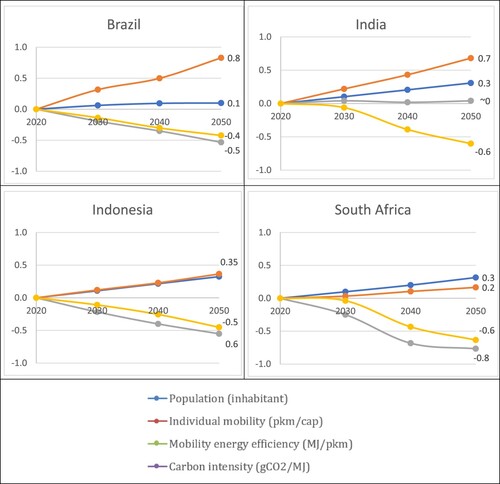Figures & data
Figure 1. Passenger mobility projections in pkm per capita, 2020–2050.
Note: Metropolitan areas defined as: the eight largest metropolitan areas in Brazil: São Paulo, Rio de Janeiro, Brasília, Salvador, Fortaleza, Belo Horizonte, Recife, and Porto Alegre with more than 1.5 million inhabitants (16% of the population); the six largest in Indonesia: greater Jakarta, Bandung Raya, Surabaya, Medan, Semarang and Palembang with more than 1.5 million inhabitants (18% of the population). In India, metropolitan areas cover all cities having more than 1 million inhabitants, which includes 9 megacities with more than 6 million and 70 cities with more than 1 million inhabitants (30% of the population). The South African team has not been able to advance on such disaggregation between metropolitan versus non-metropolitan areas.
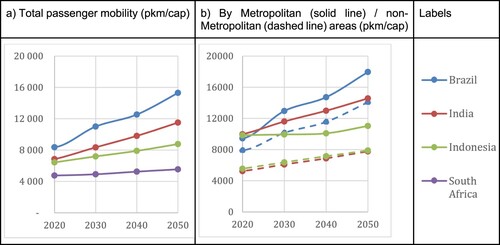
Figure 2. Share of pkm generated by constrained activities in Metropolitan (Solid line) / non-Metropolitan (Dashed line) areas, 2020–2050.
Note: ‘Constrained’ refers to a specific type of travel activity that is deemed essential. For example, this includes getting to a workplace or place of education, going home or buying food. ‘Non-constrained’ mostly refers to ‘leisure’ type of activity.
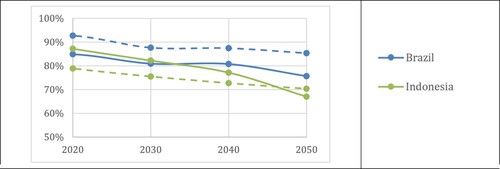
Figure 3. Share of private motorized mobility (car and motorized 2-wheelers) in total mobility (%Gpkm), 2020–2050.

Figure 4. Share of private motorized mobility (car and 2-wheelers) for constrained and non-constrained trips in the two geographical areas, 2020–2050.
Note: In India, initial analyses have highlighted that the use of private mobility to fulfil constrained activities was more important in metropolitan than in non-metropolitan areas. This could be mostly explained by the fact that households in metropolitan areas have a better spending power and can afford a private vehicle.
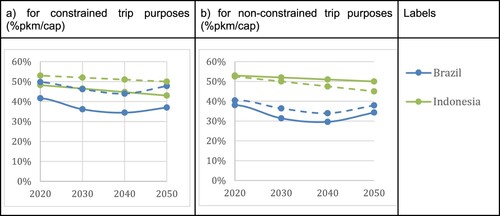
Figure 5. Share of passenger transport final energy consumption from non-fossil fuel sources (biofuels and electricity), %EJ, 2020–2050.
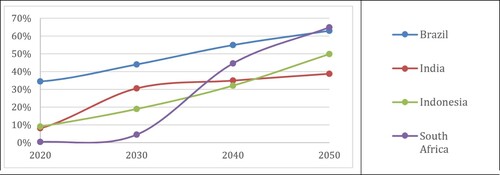
Figure 6. (a) Share of full-electric vehicles in total car stock, and (b) share of liquid biofuels and biogas in total liquid fuels and pipe gas consumed by passenger transport, 2020–2050.
Note: Plug-and-Hybrid Electric Cars do represent an important part of the car stock in Brazil and Indonesia by 2050, around one-third.
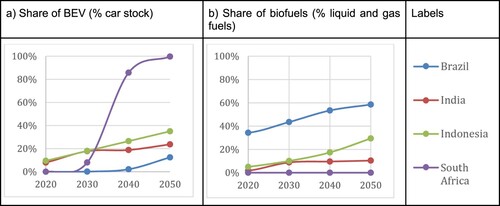
Figure A1. DDP Design framework for passenger transport (Lefevre et al., Citation2020).
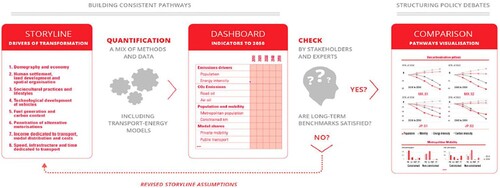
Table A1. Overview of the modelling and quantification architecture.

